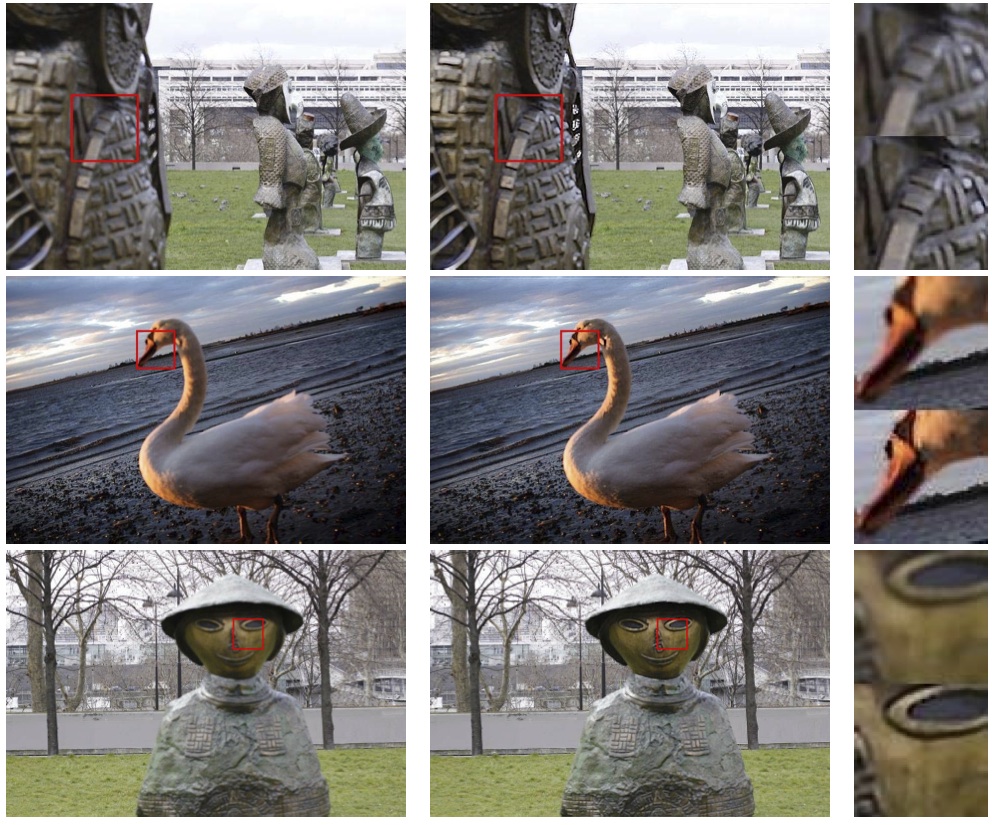Section: New Results
Image restoration, manipulation and enhancement
Learning to Estimate and Remove Non-uniform Image Blur
Participants : Florent Couzinie-Devy, Jian Sun, Karteek Alahari, Jean Ponce.
This work addresses the problem of restoring images subjected to unknown and spatially varying blur caused by defocus or linear (say, horizontal) motion. The estimation of the global (non-uniform) image blur is cast as a multi-label energy minimization problem. The energy is the sum of unary terms corresponding to learned local blur estimators, and binary ones corresponding to blur smoothness. Its global minimum is found using Ishikawa's method by exploiting the natural order of discretized blur values for linear motions and defocus. Once the blur has been estimated, the image is restored using a robust (non-uniform) deblurring algorithm based on sparse regularization with global image statistics. The proposed algorithm outputs both a segmentation of the image into uniform-blur layers and an estimate of the corresponding sharp image. We present qualitative results on real images, and use synthetic data to quantitatively compare our approach to the publicly available implementation of Chakrabarti et al. 2010. This work has been published at CVPR 2013 [4] and example results are shown in figure 5 .
|
Efficient, Blind, Spatially-Variant Deblurring for Shaken Images
Participants : Oliver Whyte [Microsoft Redmond] , Josef Sivic, Andrew Zisserman, Jean Ponce.
In this chapter we discuss modeling and removing spatially-variant blur from photographs. We describe a compact global parameterization of camera shake blur, based on the 3D rotation of the camera during the exposure. Our model uses three-parameter homographies to connect camera motion to image motion and, by assigning weights to a set of these homographies, can be seen as a generalization of the standard, spatially-invariant convolutional model of image blur. As such we show how existing algorithms, designed for spatially-invariant deblurring, can be “upgraded" in a straightforward manner to handle spatially-variant blur instead. We demonstrate this with algorithms working on real images, showing results for blind estimation of blur parameters from single images, followed by non-blind image restoration using these parameters. Finally, we introduce an efficient approximation to the global model, which significantly reduces the computational cost of modeling the spatially-variant blur. By approximating the blur as locally-uniform, we can take advantage of fast Fourier-domain convolution and deconvolution, reducing the time required for blind deblurring by an order of magnitude.
This work has been accepted for publication as a book chapter in the upcoming book “Motion Deblurring: Algorithms and Systems" to be published by Cambridge University Press in May 2014. (http://www.cambridge.org/fr/academic/subjects/engineering/image-processing-and-machine-vision/motion-deblurring-algorithms-and-systems ) The demo implementing deblurring of images degraded by camera shake is available online at: http://www.di.ens.fr/willow/research/saturation/ .


